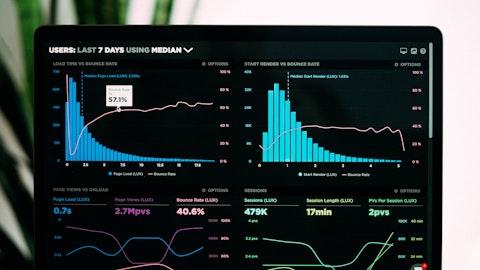Ebrahim Poonawala: Good morning and thank you. I guess maybe, David, just sticking to that, as you make the asset management business less dense in terms of balance sheet consumption. How do we think about the ROTE target you put out last year? Is that still achievable within the 3-year time frame that you had laid out or does that get pushed out given the work that needs to be done and, in a world, where consumers being deemphasized?
David Solomon: I think, candidly, that it depends on the environment. An environment with massive swing in asset prices continues, we will push it out. If that simply normalizes than the overall economic picture of the firm. In addition to the work we’re doing on the expense side that we’ve gotten focused on, we will show a very, very different picture. I’m not going to guess on how that will play out. But again, I’d amplify that I don’t think what we saw in 2022 was normal. And certainly, if you go back and look at 15 years of history, it wasn’t.
Ebrahim Poonawala: Okay. And I guess just as a follow-up in terms of growth in asset management, wealth management, significant asset price dislocations. Does that create some M&A opportunities when we think about inorganic growth in those businesses? Or for the time being is the expectation that most of this is going to be organic?
David Solomon: I think at the moment, we’re extremely focused on in 2023, executing on the decisions we made to invest in our platform and moving forward from here, I do think that in the future, there still could be inorganic opportunities to accelerate the journey in asset and wealth management. But certainly, this year, we’re focused on the execution. We made an acquisition and asset management last year. We want to integrate NNIP. We want to move forward with that. So I think this year, we will be focused on execution.
Ebrahim Poonawala: Got it. Thank you.
Operator: We will take our next question from Steven Chubak with Wolfe Research.
Steven Chubak: Hey, good morning.
David Solomon: Good morning.
Steven Chubak: So David and Denis, I wanted to start off with a question just on the provision outlook. Admittedly, the loan loss provision came in higher than we had anticipated. And I was hoping you could just speak to, how much of it was growth math related versus deterioration in the macro? And given some of the planned actions you’re going to take for that business, how should we think about like a normalized level of loan growth and provision expectation that we should expect going forward?
Denis Coleman: Good morning, thank you for that So let me help with some color as it relates to provisions, particularly in the fourth quarter. So order of magnitude, the component of that build attributable to growth was about 50%. Net charge-offs about 25%, and the balance attributable to our scenario. I think what you can see in the build of the provisions over the course of the fourth quarter, and we do expect some of this to continue over the course of 2023 is that we began the on-balance sheet originations in our point-of-sale lending platform, GreenSky. And so that obviously brings with it an upfront reserve build. So that’s something that initiated over the balance of this past year and will continue through the following year.
Steven Chubak: Got it. And maybe just for a follow-up on capital. As it relates to the discussion tied to Glenn’s question, I was hoping you could speak to how your scenario planning for Basel IV, Basel III end game. I recognize we don’t have a proposal yet, but certainly, it has significant implications for future returns you can generate. You’re running with a healthy level of cushion at the moment. But just wanted to understand how you see it impacting your various businesses? What planned actions can you take to maybe mitigate some of the pain?
Denis Coleman: Sure. Fair question on everybody’s mind. As you note, we don’t yet have the details. But we give it a lot of thought. We’ve taken a number of steps in terms of building out our modeling capabilities to make sure as and when we do get an actual rule that we will be in a position to respond quickly to that. We do have a long-standing track record of responding to changes to regulatory guidance. You can see over the course of the fourth quarter across a number of our financial resources that we were able to maneuver them very, very quickly to build capital and change our RWA footprint, given our view of the environment and some strategic decisions there. So we’re standing by for more detail on the rule, but confident that when we get it, we will be able to manage accordingly.
Steven Chubak: That’s great. Thanks for taking my questions.
Operator: Thank you. We will take our next question from Betsy Graseck with Morgan Stanley.
Betsy Graseck: Hi, good morning.
David Solomon: Good morning, Betsy.





